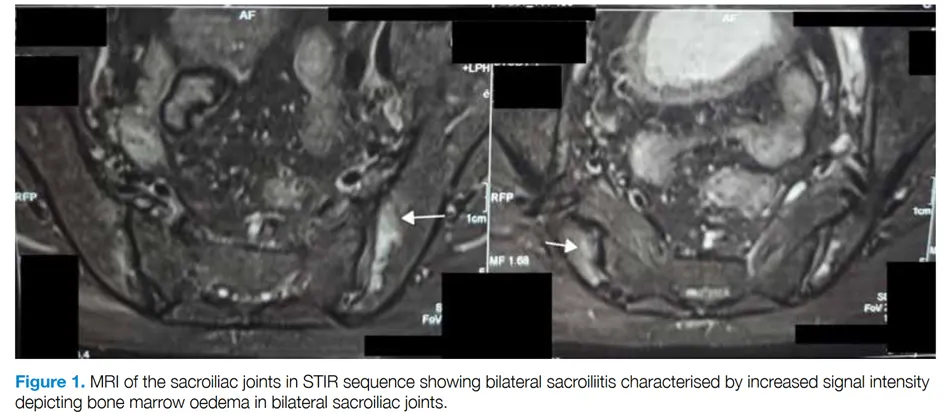- CEREMAIA
- Sep 23, 2024
- 2 min read
Updated: Sep 24, 2024
First author: Denizmen et al
Review: Clinical nuclear medicine
Reference : DOI : 10.1097/RLU.0000000000005280
Link to article : https://pubmed.ncbi.nlm.nih.gov/38967510/
Case Report:
The authors present the case of a 43-year-old Turkish man who had been followed for ankylosing spondylitis (AS) since the age of 16. He later developed severe AA amyloidosis with end-stage renal failure and underwent a kidney transplant. A 99m Tc-PYP scintigraphy was requested by his cardiologists due to an atypical appearance on a cardiac MRI. This scintigraphy showed minimal cardiac uptake of 99m Tc-PYP but a diffuse accumulation of the tracer in the thyroid gland (figure, panels A, B, and C). PET-CT images revealed increased uptake of 99m Tc-PYP in a diffusely enlarged thyroid gland containing regions with fatty density but no tracer accumulation (figure, panels D and E). There was no gastric contrast uptake, indicating the presence of free technetium (figure, panels F and G). Thyroid ultrasound showed diffuse gland hypertrophy with heterogeneous echogenicity, with hyper-echogenic areas closest to the transducer. A thyroid fine-needle aspiration biopsy revealed homogeneous eosinophilic deposits in the perifollicular region, Congo red-positive staining, and apple-green birefringence under polarized light, confirming amyloidosis (figure, panels J and K). Thyroid function was normal.
AA amyloidosis is a rare complication of spondyloarthropathies, with a reported prevalence between 1.1% and 2.15%. (1)
Amyloid goiter is a late complication of AA amyloidosis, mainly observed after renal amyloidosis, and can result in a rapidly growing goiter, potentially leading to clinical symptoms such as dyspnea, sometimes requiring decompressive surgery.
A study on amyloid goiters in AA amyloidosis secondary to familial Mediterranean fever showed that most patients (75%) were euthyroid, though alterations in thyroid hormone levels could be observed (2).
Conclusion: This is the first case demonstrating 99m Tc-PYP SPECT/CT uptake in an amyloid goiter in a patient with AA amyloidosis secondary to ankylosing spondylitis. This imaging technique could serve as a non-invasive tool to confirm the amyloid nature of a goiter in patients with confirmed AA amyloidosis.
References:
1. Papa R, Lachmann HJ. Secondary, AA, Amyloidosis. Rheumatic Disease Clinics of North America [Internet]. nov 2018 [cité 8 sept 2024];44(4):585‑603. Disponible sur: https://linkinghub.elsevier.com/retrieve/pii/S0889857X18300577
2. Vergneault H, Terré A, Buob D, Buffet C, Dumont A, Ardois S, et al. Amyloid Goiter in Familial Mediterranean Fever: Description of 42 Cases from a French Cohort and from Literature Review. JCM [Internet]. 5 mai 2021 [cité 8 sept 2024];10(9):1983. Disponible sur: https://www.mdpi.com/2077-0383/10/9/1983






